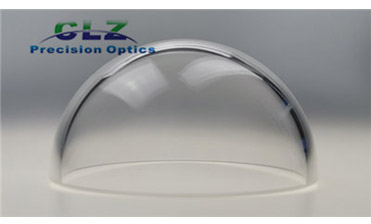What are the Techniques for Shooting Sub-Shots?
As a Dome Lens Manufacturer, share with you. Variety is crucial in any photo combination. When displaying photos, the first thing we learn is that less is more; it is better to show 5 good photos than 25 mediocre photos. The next trick to presenting photos is to find those photos that make people scream "wow". This is done through diversity and let the audience look forward to your next visual surprise.
Underwater Camera Dome
Over- and under-lens, also called sub-lens, are very suitable for blending into your macro and wide-angle collection. The following are the basic techniques that can help you shoot under the split lens.
1. Use a large dome
Whether it is short-term energy or long-term energy, the ocean surface can roll at most dive sites. Just like underwater wide-angle photography, a good sub-lens consists of several elements: a powerful top side scene, a powerful underwater scene, and a waterline across the screen. The larger the dome port, the larger the surface area that divides the water and forms this waterline. The large dome provides more space for the waterline to move up and down on the dome, while also dividing water. For more advanced shooters, this allows them to creatively use water lines (straight lines and wave angles) and precise shooting angles (number of water surfaces and underwater scenery). The disadvantage is that the large dome is more difficult to carry, and it is not the best choice for close-up and wide-angle photography. The large dome facilitates the wide-angle lens and the sub-lens of large objects such as whale sharks.
2. Use fisheye or wide-angle lens
This is an obvious reminder, but very important. Don't be afraid to use your fisheye lens for split shots. Of course, the surface scene may look a little distorted, but sometimes this effect is cool. The waterline often emphasizes the slight warpage of the top object. If the fisheye distortion effect is not needed, you can use the post-processing function to straighten it. The wide-angle lens can also be used in some behind-the-scenes scenes.
3. Use high aperture.
Shooting sub-lens is similar to landscape and close-up wide-angle photography, because you need a large depth of field to maintain the focus of the entire image. In most split-shot scenes, there is an underwater object. The top object is within a lens of one or two meters, and can be anywhere from 3 meters to hundreds of meters away. Stopping at a low f-stop (ie F16 or F18) allows you to keep the focus of two scenes, including the water surface in front of the dome. When shooting with a small aperture, it is very important to closely monitor the shutter speed. To obtain a clear image, the shutter speed must be 1/60 or above. In order to expose images at a fast shutter speed, the International Organization for Standardization often needs to increase the exposure speed.
Our company also has Underwater Camera Dome on sale, welcome to contact us.

评论
发表评论